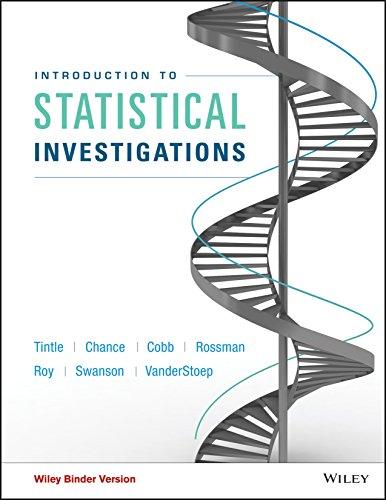Refer to the previous exercise that investigated the association between length of index finger and height. The
Question:
Refer to the previous exercise that investigated the association between length of index finger and height. The data file HeightAndFingerLength contains data on the height (inches) and the length of index finger of dominant hand (cm) for students in a statistics class.
a. Using appropriate technology (applet or statistical software) create a scatterplot of the data. On the scatterplot, locate the individual who reported a finger length of 5 cm and height of 70 inches. Does this individual appear to be an unusual observation? Explain you reasoning.
b. Next, report the correlation coefficient for these data.
c. Now, remove this individual (finger length of 5 cm and height of 70 inches). Recalculate the correlation coefficient for the data without this individual.
d. Did the correlation coefficient increase (move farther from zero) or decrease (move closer to zero) on the removal of the individual who reported a finger length of 5 cm and height of 70 inches? Explain why that makes sense.
Data from previous exercise
An article titled “Giving the Finger to Dating Services” appeared in Chance magazine (2008) that investigated the association between length of index finger and height. This research was spurred by a report that online dating sites were asking members for the length of their index fingers. Perhaps this information could be used to verify whether the member was reporting his or her correct height on the profile? Th e data file HeightAndFingerLength contains data on the height (inches) and the length of index finger of dominant hand (cm) for students in a statistics class. Enter the data into the Corr/Regression applet.
Step by Step Answer:

Introduction To Statistical Investigations
ISBN: 9781118172148
1st Edition
Authors: Beth L.Chance, George W.Cobb, Allan J.Rossman Nathan Tintle, Todd Swanson Soma Roy





